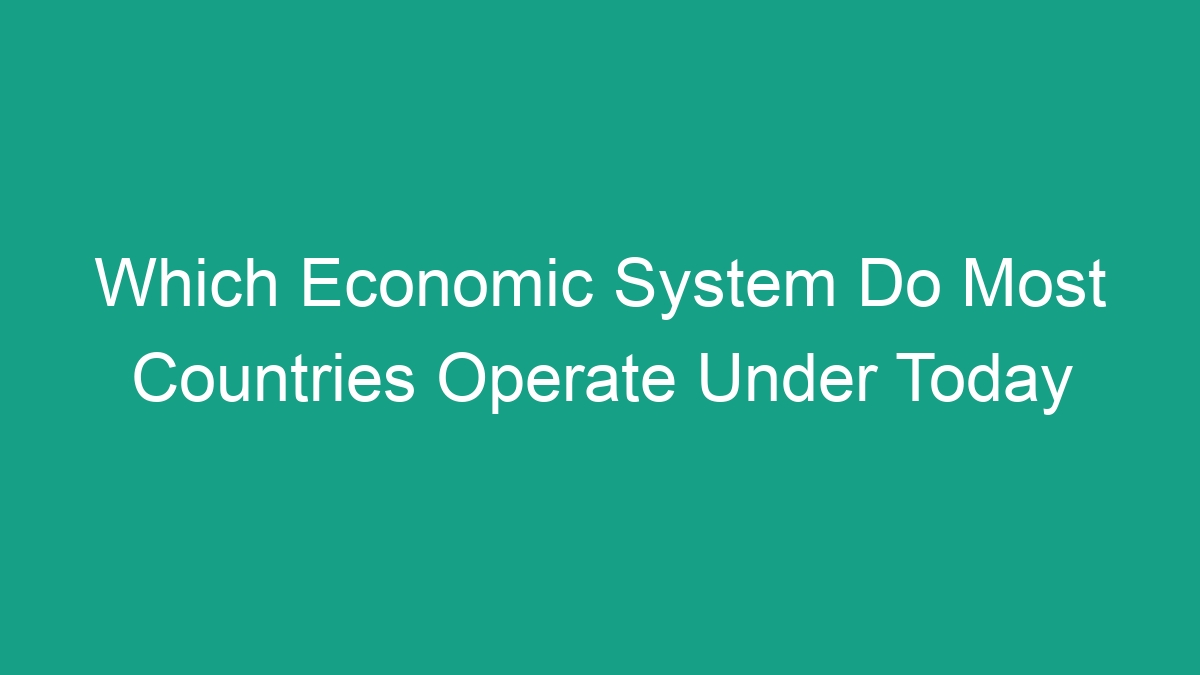
In today’s global economy, countries operate under various economic systems that determine how resources are allocated, production is organized, and goods and services are distributed. The most common economic systems in the world today are capitalism, socialism, and mixed economies. Let’s take a closer look at these economic systems and see which one most countries operate under today.
Capitalism
Capitalism is an economic system in which the means of production and distribution of goods and services are privately owned and operated for profit. In a capitalist economy, the government has limited intervention in the market, and individuals and businesses have the freedom to make their own economic decisions. Some key features of capitalism include:
- Private ownership of property and businesses
- Free market competition
- Profit motive
- Minimal government intervention
Many developed countries, such as the United States, Canada, the United Kingdom, and Germany, operate under a capitalist economic system. The principles of capitalism have led to economic growth, innovation, and higher standards of living in these countries.
Socialism
Socialism is an economic system in which the means of production, distribution, and exchange are owned or regulated by the community as a whole. In a socialist economy, the government has a more significant role in planning and regulating economic activities, and there is a focus on social and economic equality. Some key features of socialism include:
- Public ownership of property and resources
- Central planning
- Redistribution of wealth
- Social welfare programs
Countries like Sweden, Norway, Denmark, and Finland have adopted socialist economic policies, often referred to as social democracies. These countries have high levels of social welfare, universal healthcare, and strong labor rights, which contribute to high living standards and low income inequality.
Mixed Economy
A mixed economy combines elements of both capitalism and socialism, allowing for private ownership and market forces to coexist with government intervention and social welfare programs. In a mixed economy, the government plays a role in regulating and providing essential services while also allowing for private enterprise and free market competition. Key features of a mixed economy include:
- Private and public ownership of property
- Market competition and government regulation
- Redistribution of wealth and social welfare programs
- Support for both market efficiency and equity
Many countries, including the United States, Canada, the United Kingdom, and Australia, operate under a mixed economic system. These countries combine elements of capitalism and socialism to achieve economic growth and social welfare goals.
Global Trends in Economic Systems
While the majority of countries operate under either capitalism, socialism, or a mixed economy, there are global trends and shifts in economic systems that are worth noting. Some key points to consider include:
- Rise of Mixed Economies: Many countries are moving towards mixed economies to address issues of income inequality, social welfare, and sustainable development.
- Market Reforms in Socialist Countries: Some socialist countries, such as China and Vietnam, have implemented market-oriented reforms while maintaining state control over key industries.
- Globalization and Capitalism: The process of globalization has led many countries to adopt capitalist economic policies to integrate into the global economy and attract foreign investment.
- Challenges to Economic Systems: Economic systems face challenges from technological advancements, environmental sustainability, and shifting global power dynamics, which require ongoing adaptation and reforms.
Conclusion
In conclusion, most countries in the world today operate under either capitalism, socialism, or a mixed economic system. Each economic system has its strengths and weaknesses and is influenced by historical, political, and cultural factors. Understanding the differences between these economic systems is crucial for policymakers, businesses, and individuals to make informed decisions and contribute to economic development and social welfare.




